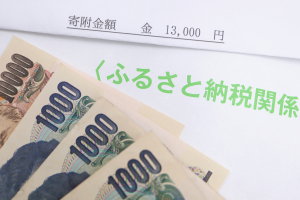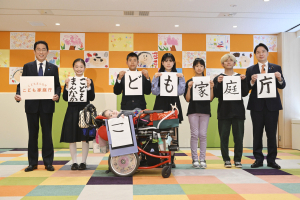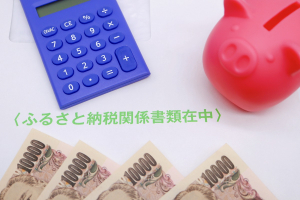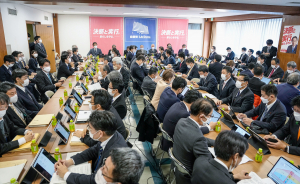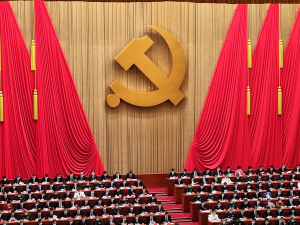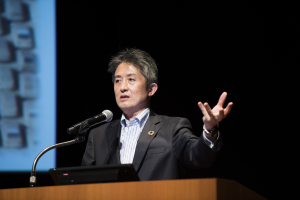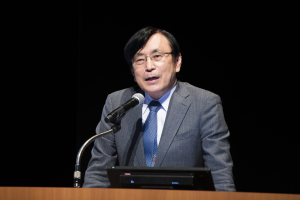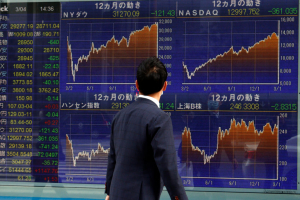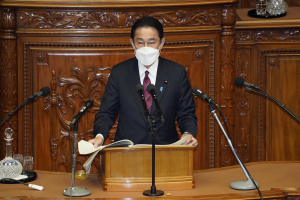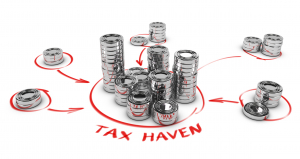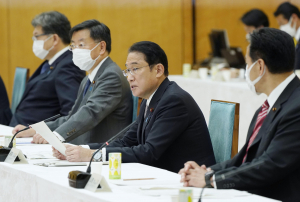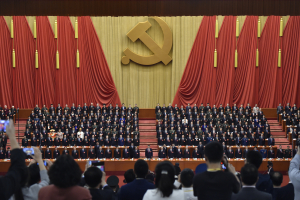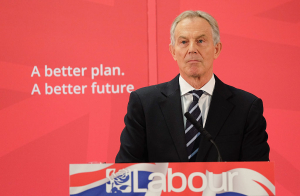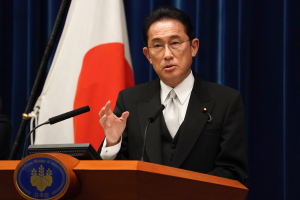
Whither Ueda’s Bank of Japan?
March 30, 2023
R-2022-128E
The Bank of Japan has been pursuing an ultra-loose monetary policy for more than 20 years. What are the prospects for a course change under incoming Governor Kazuo Ueda?
* * *
On February 10 this year, the government of Prime Minister Fumio Kishida announced its selection of Kazuo Ueda, an economics professor and former Bank of Japan policy board member, to succeed Haruhiko Kuroda as BOJ governor. After some initial volatility triggered by the unexpected decision, the markets were quickly reassured following the announcement of the bank’s new deputy governors—former Financial Services Agency Commissioner Ryozo Himino and BOJ Executive Director Shin’ichi Uchida—with insiders praising the new team as being carefully considered and well-balanced. Having been confirmed by the Diet, Ueda is expected to assume the helm of Japan’s central bank on April 9. What sort of monetary policy can we expect going forward? In the following, I offer some general predictions based on my knowledge of Ueda’s thinking.
The Father of Forward Guidance
Perhaps the single biggest clue to Ueda’s policy orientation is his record as the originator of what is now widely known as “forward guidance”: explicit public communication from the central bank regarding the anticipated trajectory of monetary policy. Today, this has become standard practice, but it was a new concept when the BOJ adopted its “time-axis policy” at Ueda’s initiative more than 20 years ago.[1]
In February 1999, the BOJ instituted the world’s first zero interest rate policy (ZIRP) to combat deflation and revitalize the economy. The following April, the BOJ adopted a “time-axis policy” that sought to reassure the market by announcing the bank’s commitment to keep its target short-term interest rate at or around 0% “until deflationary concerns are dispelled.” While such forward guidance has become commonplace—as seen, for example, in the Federal Reserve Board’s post-meeting comments concerning future interest-rate hikes—it is most important, as we shall see, when the policy rate has reached the so-called zero lower bound.[2]
In his 2005 book Zero kinri to no tatakai (The Struggle with Zero Interest), Ueda explains the concept’s genesis, particularly the contribution of a paper by Paul Krugman about Japan and the liquidity trap.[3] Krugman wrote that, with nominal interest rates at or approaching zero, an increase in the current money supply would have no effect (the liquidity trap). But if investors assume that the money supply will continue to increase even after interest rates become positive, this will result in higher expected inflation and lower real interest rates, which can strengthen the economy. He notes, “The traditional view that monetary policy is ineffective in a liquidity trap, and that fiscal expansion is the only way out, must therefore be qualified: monetary policy will in fact be effective if the central bank can credibly promise to . . . seek a higher future price level.”
At the time, the prevalent understanding was that quantitative easing was needed to lift the economy out of the liquidity trap, but that was not how Ueda saw it. In his view, economic behavior was influenced not only by today’s money supply but also by tomorrow’s—in this case, the central bank’s public commitment to continue increasing the money supply. That being the case, the best bet was to frame the BOJ’s monetary policy in the language of interest rates and promise that tomorrow’s interest rates would be lower. This was the basis for forward guidance.
These days, zero interest rates are no longer unusual, but some two decades ago, ZIRP was widely viewed as an emergency measure. People like then BOJ Governor Masaru Hayami doubtless felt it should be lifted as soon as possible, and the BOJ did just that (albeit temporarily) in August 2000. As a member of the policy board, Ueda voted against that decision. Citing his position on that occasion, some have characterized Ueda as a “dove,” fundamentally committed to loose monetary policy. In my view, however, Ueda’s position stemmed not from an ideological orientation but from his strong commitment to forward guidance. After all, the BOJ had promised to maintain ZIRP until deflationary concerns were dispelled, and in Ueda’s view the economy was not there yet. He was concerned that if the central bank broke its promise once, the market would lose confidence in the BOJ’s forward guidance.[4]
Skepticism toward QE and YCC
The flip side of Ueda’s belief in forward guidance is that he is somewhat skeptical of the efficacy of quantitative easing. Krugman’s paper assumed that increasing the money supply has no effect when the nominal interest rate is zero. But if increasing the money supply did have an effect, even with the interest rate at zero, this would mean that the zero lower bound (and the “struggle with zero interest”) was not so crucial after all.
My own view, as I explained elsewhere, was that QE could have a positive effect—even if economic theory predicts that it could not—in real-world markets, where participants tend to display the kind of strategic, second-guessing behavior of judges in the classic “Keynesian beauty contest.”[5] It seemed to me, therefore, that the BOJ’s unconventional “quantitative and qualitative easing” policy (QQE) was an experiment worth conducting. (This view dovetails with former Fed Chairman Ben Bernanke’s oft-quoted complaint that QE “works in practice, but it doesn’t work in theory.”)
It seems to me, after a careful reading of Ueda’s past statements, that he acknowledged the possibility that QE could have a positive effect but was doubtful of the sustainability and reliability of an effect that was not supported by theory.[6] Looking back on the results of a decade of QQE by the BOJ, one must admit that this view showed considerable insight.
Similarly, Ueda would naturally have been skeptical of the BOJ’s yield curve control (YCC), which seeks to control short- and long-term interest rates through market operations. For one thing, the BOJ could scarcely provide forward guidance on long-term rates; if it were to announce its intent to raise the rates at the next policy meeting, for example, it would trigger an immediate selloff of long-term government bonds. In December 2022, when the BOJ raised the YCC cap from 0.25% to 0.5%, it was much criticized for being a “surprise move”; but in this case, the surprise was really the bank’s only choice.[7]
However, I believe Ueda was more concerned that YCC would rob the financial markets of their function. When using forward guidance as a basic component of monetary policy, it is important to ascertain the degree to which the markets believe the central bank’s promises. Yield curves are the most important source of such information. In Ueda’s eyes, the adoption of YCC was tantamount to relinquishing that vital source of information. The emphasis Ueda places on the function of financial markets is evident from the fact that chapters 6 and 7 of Zero kinri to no tatakai are both devoted to analysis of the effect of monetary policy as reflected in the market.
A Cautious Pragmatist
Given the foregoing, it seems likely that, as governor of the Bank of Japan, Ueda will prefer a return to an orthodox monetary policy of very low interest rates (zero or slightly below) combined with strong forward guidance. Any transition from the BOJ’s ultra-loose monetary policy is unlikely until 2% inflation is firmly and stably established, and that could take some time. However, when it comes to YCC and other policy tools with potentially harmful side-effects, he might well begin a course correction sooner, after weighing the costs and benefits.
The point to keep in mind is that Ueda is by nature extremely cautious. His dissenting vote in August 2000 was motivated, after all, by caution against prematurely dismissing the threat of deflation. In the current international climate, there are a number of external uncertainties that could strongly impact Japan’s economic growth and inflation rate, including the war in Ukraine, a slowdown in Europe and the United States, and the situation surrounding China. As of this writing, most experts are of the view that the Fed will continue its tightening of monetary policy for some time to come, but were it to switch course for some reason, the yen could rise rapidly against the dollar. Ueda will surely recall how the BOJ’s decision to lift ZIRP in 2000 was blamed for Japan’s economic contraction around that time, even though the cause was clearly the collapse of America’s dot-com bubble, not the BOJ’s monetary policy. With all this in mind, Ueda is unlikely to embark on any abrupt course correction.
We should also realize that Ueda is someone who values consensus, as evidenced by the fact that he repeatedly voted to continue QE notwithstanding his personal reservations about its efficacy. He will be reluctant to steer a new course without overwhelming support from the policy board, and the reflationists still have a voice there, even though their numbers and influence have dwindled. All of this leads to the conclusion that Ueda will approach any major change in monetary policy with the utmost caution.
[1] At the February 24 confirmation hearing of the House of Representatives Committee on Rules and Administration, Ueda spent a good portion of his time explaining the “time-axis policy.”
[2] The zero lower bound is the lowest limit to which rates can be cut as a stimulus measure. In recent years, as negative interest rates have proven viable, the term “effective lower bound” has come into usage as an alternative, but in this piece I have adhered to the traditional terminology.
[3] Paul Krugman, “It’s Baaack: Japan’s Slump and the Return of the Liquidity Trap,” Brookings Paper on Economic Activity, 1998, no. 2, https://www.brookings.edu/bpea-articles/its-baaack-japans-slump-and-the-return-of-the-liquidity-trap/.
[4] Last year, when inflation rose above 2%, Ueda warned against any hasty tightening of monetary policy in a piece in the Nihon Keizai Shimbun (“Sessoku na kin’yu hikishime wa sakeyo,” July 6, 2022). Such caution was to be expected at the time, when most observers believed the rise in prices was temporary. The consumer-price outlook has changed a good deal since then (there is a good chance that the BOJ will have to revise its fiscal 2023 inflation estimate upward from 1.6%), but thus far Ueda has shown no inclination to change course.
[5] See Hideo Hayakawa, Kin’yu seisaku no “gokai” (Misunderstandings of Monetary Policy), Keio University Press, 2016.
[6] At the February 24 Diet hearing, in response to questions from opposition lawmaker Seiji Maehara, Ueda stressed the need for patience, insisting that the BOJ governor’s job was not to devise “some special, magically effective monetary easing policy.” The statement highlights a key difference between Ueda and Kuroda, who experimented repeatedly and was fond of surprises.
[7] When YCC was adopted in February 2016, I called it a smart policy. With the adoption of QQE, the BOJ had committed itself to boosting its holdings of long-term government bonds, and that commitment had climbed to ¥80 trillion annually with the expansion of QQE in October 2014 (round two of the Kuroda “bazooka” stimulus). This was not something the BOJ could sustain over the long term. By shifting the focus from quantitative easing to interest rates, it was possible for the BOJ to scale back its bond purchases even while maintaining a strong commitment to a loose monetary policy. (In fact, the BOJ did dial down its purchases considerably in a low-profile process referred to as “stealth tapering.”) Policy makers, unlike scholars, are obliged to come up with ways of correcting policy mistakes, as opposed to just criticizing them. I was aware, of course, that YCC could lead to an excessive drop in the yen’s value in the event that interest rates soared overseas, particularly in the United States. Indeed, in April 2022, with the Fed embarking on a series of rate hikes, I argued in an article on this website (Japanese only) the need for greater flexibility in the BOJ’s YCC program.
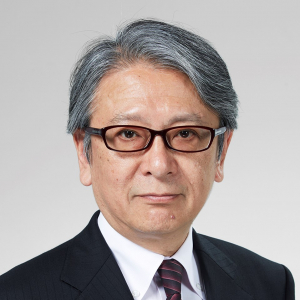







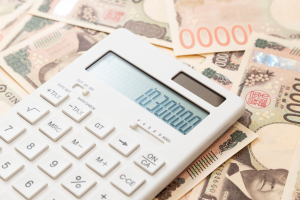

![[Policy Research] Water Minfra: A New Strategy for Water-Centric Social Infrastructure](/files_thumbnail/research_2023_Oki_PG_Mizuminhura_png_w300px_h180px.png)


